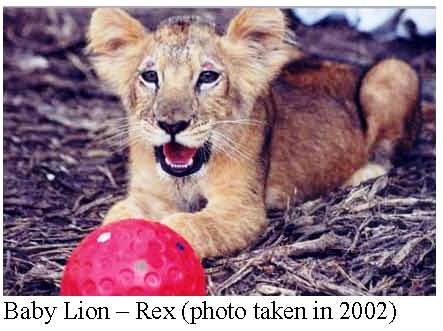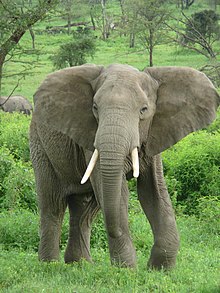Being mammals ourselves, we tend to feel passionately about the plight of other mammals, such as tigers and pandas. Most endangered mammal species are threatened by habitat loss, while a significant percentage continue to be hunted despite dwindling population sizes.
According to the IUCN, some 20 percent of all known mammal species are either threatened or endangered. That's nearly 1,100 species. Some, like the baiji, are likely beyond hope. Others, like the giant panda, continue to make strides in the right direction.
According to the IUCN, some 20 percent of all known mammal species are either threatened or endangered. That's nearly 1,100 species. Some, like the baiji, are likely beyond hope. Others, like the giant panda, continue to make strides in the right direction.
- Addax
The addax is a rare antelope found in the deserts of northwest Africa.African Wild Ass
Like their horse and zebra relatives, wild asses have a long neck and legs and a mane on the back of the neck, which is erect on the African wild ass.African Wild Dog
African wild dogs are about the size of a medium-sized domestic dog.Anoa
The anoa is one of the smallest cattle species, and one of the most endangered.Arabian Oryx
The Arabian oryx is an antelope that lives in nomadic herds.Asian Buffalo
The Asian buffalo is a cattle species that occurs in India, Nepal, Bhutan and Thailand, but its range was once much larger.Asian Elephant
Asian elephants are somewhat smaller than African elephants, their close relatives.Aye-Aye
The aye-aye is a species of lemur, a group of primates with large ears, long limbs and a long body.Bactrian Camel
The Bactrian camel is a two-hump camel with a shaggy coat and an almost U-shaped neck. - Baiji
The baiji is a toothed whale with an elongated beak, a sleek body and an average weight of about 300 pounds.Baird's Tapir
Tapirs are piglike animals with long legs, an extended trunk and relatively streamlined bodies.Bearded Saki
The bearded saki is a monkey found in the dense tropical forests of the Amazon. It is an unusual-looking animal.Black-Footed Ferret
The black-footed ferret is a carnivorous mammal with short ears, a short snout and five toes on each foot.Black Rhinoceros
The black rhinoceros is a huge animal with gray skin, a hooked upper lip and a horn on the snout made of tough protein.Blue Whale
The largest animal on the planet, the blue whale can reach a length of more than 100 feet.Bonobo
The bonobo is slightly smaller than the chimpanzee, and has a slimmer body and longer limbs.Broad-Nosed Gentle Lemur
The broad-nosed gentle lemur is the largest of the bamboo lemurs.
























 Lions seize prey with their powerful jaws.Lions are found in many parts of Africa. They are most abundant in grassland areas where game is most plentiful; but they also are found in rocky, semidesert regions. The once abundant Asiatic lion formerly roamed the northern half of India; today, only a few hundred individuals, virtually all of them living in a wildlife sanctuary in the Gir Forest, survive.
Lions seize prey with their powerful jaws.Lions are found in many parts of Africa. They are most abundant in grassland areas where game is most plentiful; but they also are found in rocky, semidesert regions. The once abundant Asiatic lion formerly roamed the northern half of India; today, only a few hundred individuals, virtually all of them living in a wildlife sanctuary in the Gir Forest, survive.












